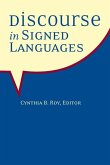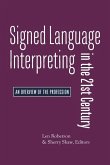This volume elucidates several key factors of the signed languages used in select international Deaf communities. Kristin Mulrooney studies ASL users to delve into the reasons behind the perceived differences in how men and women fingerspell. Bruce Sofinski assesses the current state of transliteration from spoken English to manually coded English, disclosing that competent transliterators do not necessarily produce the desired word-for-sign exchange. In the third chapter, Paul Dudis comments upon a remarkable aspect of discourse in ASL-grounded blends. He discusses how signers map particular concepts onto their hands and bodies, which allows them to enrich their narrative strategies. By observing meetings of deaf and nonsigning hearing people in the Flemish Deaf community, Mieke Van Herreweghe determines whether interpreters' turn-taking practices allow for equal participation. And the final chapter features a respected team of Spanish researchers led by Esperanza Morales-Lopez who investigate the Catalan/Spanish bilingual community in Barcelona. These scholars measure the influence of recent worldwide, Deaf sociopolitical movements advocating signed languages on deaf groups already familiar with bilingual education.
Hinweis: Dieser Artikel kann nur an eine deutsche Lieferadresse ausgeliefert werden.
Hinweis: Dieser Artikel kann nur an eine deutsche Lieferadresse ausgeliefert werden.








